Fillers for the Cheeks

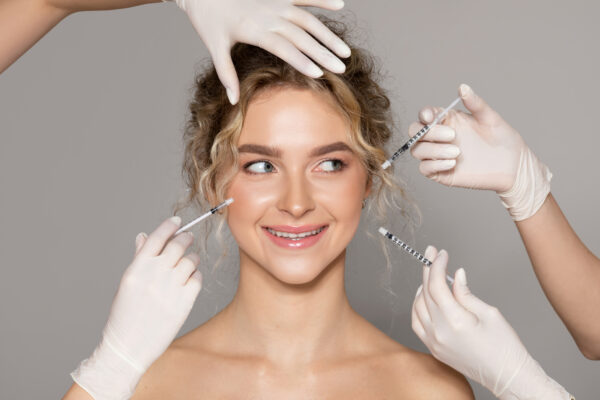
Dermal fillers can restore a younger look by enhancing the volume of your cheeks and creating a lifted appearance.
Your Cheeks Can Be Given Youthful Plumpness with Dermal Fillers
As people age, their cheeks lose volume, resulting in a gaunt and sunken appearance. Regain a more youthful appearance with the help of dermal fillers, which can add volume to your cheeks and give you a lifted look.
A Brief Explanation on What Cheeks Dermal Filler Is
As people age, their cheeks naturally lose volume and collagen. Depressions, hollows, and early wrinkling occur when the midface and lower cheeks lose their natural volume. When injected into the skin, hyaluronic acid can restore lost volume and create a plump appearance in the cheeks. This is achieved through the use of dermal filler injections. Dermal fillers offer a potential solution for those seeking a more youthful and vibrant appearance.
A Comprehensive Guide to Dermal Fillers for Enhancing Cheek Volume
- All of the patient’s problems and objectives will be addressed during the session. An analysis of the individual’s face will be conducted to find the appropriate course of treatment.
- There is a lidocaine-based topical numbing ointment available for your comfort. For optimal skin desensitization, it is recommended to apply this product 30–60 minutes before injections.
- Microdoses of gel filler will be carefully injected into the mid- and lower-cheekbone areas using an excellent needle. The volume will be gradually increased in ultra-thin layers. By following this approach, an unchanged appearance is ensured.
- The impression of fullness is achieved by injecting the filler, using gentle stroking motions to distribute it evenly. After injection, the substance undergoes a gentle massaging technique to shape and position it, ensuring seamless transitions along the contours.
- Before the clients go, the medical professional will request that they grin, frown, and make other expressions to ensure that the outcomes are equal and balanced.
- Touch-ups can be performed if needed. For instance, a method to apply arnica gel to reduce the visibility of bruises will be explained. Avoiding sun exposure and limiting physical activity for a few days is recommended during the healing process.
Outcomes typically require 1-2 weeks for the swelling to subside, but many patients experience immediate effects following a single treatment. It is advisable to schedule touch-ups every 6 to 12 months to maintain the altered appearance.
The After-Treatment Process
After treatment, the individual may experience a variety of outcomes. Any swelling or bruising that occurs is typically mild and resolves quickly. Any slight pain that might be experienced can be alleviated with over-the-counter medicines. Typically, the redness subsides after a few days.
Are dermal fillers a safe option for cheek enhancement?
Typically, the risks associated with cheek dermal fillers are low. Injection-related side effects may include redness, swelling, soreness, and bruising. Infections and allergic reactions are rare when FDA-approved fillers are used correctly in a sterile setting.
Is this treatment the right fit for the clients?
Clients exhibit a moderate to slight volume loss in the lower and middle cheekbones while being free from any signs of drooping jowls or wrinkles. Individuals seeking a modest increase in volume may expect to see some enhancements. Whether fillers are suitable for one’s skin depends on various factors, such as individual concerns, skin type, and the guidance of medical professionals.
For the highest level of safety and effectiveness, it is advisable to seek injections from a certified specialist. The top priorities for medical professionals are the client’s health and the effectiveness of their treatment. In addition, a professional filler injector typically develops a personalized treatment plan to help you maintain the desired results. In addition, the potential problems with dermal fillers can be minimized by seeking the expertise of a skilled injector. Investing in higher-quality choices can lead to results that appear natural and provide a sense of security.
The Dentox training program is designed to help medical professionals minimize patient discomfort and speed up recovery when administering dermal filler injections. If you desire further information about Dentox, you should speak with Dr. Howard Katz.
If you are searching for a reliable training program, visit https://dentox.com/all-courses/dermal-fillers/. By engaging in this, medical professionals will be equipped with the necessary knowledge and abilities to excel in their respective fields, all while staying up-to-date on the latest industry advancements. Those interested in participating in live classes can visit https://dentox.com/live-courses/ to engage with actual patients.
Financing Now Available For Dentox Courses!


We’ve listened to your requests and implemented two options for financing your Dentox courses.
There are no additional fees charged to students taking advantage of these options.
1) REQUEST AN ONLINE INVOICE TO PAY IN INSTALLMENTS
This invoice can be paid in as many installments/amounts as you’d like, but must be fully paid before attending the program. Click Here, or send an email to support@dentox.com requesting the online invoice, and a link will be sent to your invoice (just use that same link to make all of the payments)
2) BUY NOW PAY LATER (4 INSTALLMENTS)
Dentox partners with Sezzle to finance your tuition. If approved, tuition can be paid in 4 installments, and does not have to be fully paid before the date of the program. To use this option, click on the ‘buy now, pay later’ button for your desired location here. At checkout select the Buy Now Pay Later option. This option is only available for our live patient courses.
Which is Better for You, Fillers or Botox?


The botox vs. filler argument has no clear winner. The best procedure depends on your facial anatomy, problems, and goals.
You have a lot of alternatives when it comes to looking younger and fighting the effects of aging. Dermal fillers and Botox are two of the most famous procedures. However, how can you tell which one is best for you?
Comprehending Botox
The pure protein known as “botox,” or “Botulinum toxin,” is obtained from the Clostridium botulinum bacteria. It has been utilized for many years to alleviate illnesses like excessive perspiration and muscle spasms. Botox is well-known in the aesthetic world for its ability to minimize the look of fine lines and wrinkles by momentarily relaxing the underlying muscles.
Botox operates by obstructing the nerve signals that cause muscles to contract. It temporarily paralyzes the targeted facial muscles upon injection, stopping them from contracting and creating wrinkles. The outcome of this muscular relaxation is smoother, younger-looking skin.
A Closer Look at Dermal Fillers
In contrast to Botox, which targets muscle activity to reduce wrinkles, dermal fillers give volume to certain regions of the face. These fillers are made of different substances—like collagen or hyaluronic acid—injected beneath the skin’s surface to smooth and plump out wrinkles.
Dermal fillers work like a magic wand to give your face volume and contour. They can improve the features of your face, treat wrinkles, and replenish lost volume. Our skin loses suppleness and collagen as we get older, which causes sagging and wrinkles to appear. Dermal fillers restore the volume that has been lost, looking for youth.
Botox versus Fillers: The Principal Distinctions
After learning the fundamentals of Botox and dermal fillers, let’s examine the main distinctions between the two procedures.
-
Targeted Regions
- Botox is primarily applied to dynamic wrinkles resulting from repetitive muscular movements. These include creases in the forehead, frown lines, and crow’s feet.
- Dermal fillers are ideal for static wrinkles that remain noticeable when the face is rested. They are frequently applied to fill nasolabial creases (smile lines) and plump up cheekbones and lips.
-
Onset and Length
- Botox usually takes a few days to begin showing effects, with the outcomes lasting around three to six months.
- Dermal fillers depend on the type of filler used. Results might vary in duration but typically last six to eighteen months.
-
Procedure and Application
- Botox is injected into particular muscles. The procedure does not have much downtime and is relatively fast.
- Dermal fillers are also injected, but because the filler is carefully positioned beneath the skin, the procedure might take a little longer. It can take more than one session for some fillers.
-
Price
- Botox: It is generally less expensive per treatment session than dermal fillers.
- Dermal fillers depend on the type and quantity utilized; they can be more expensive.
-
Upkeep
- Botox needs consistent touch-ups to preserve the outcomes.
- Dermal fillers may require fewer touch-ups in the long run if their effects persist.
Which one is better for you?
The big dilemma is how to choose between dermal fillers and Botox. In the end, the response will depend on your objectives and worries.
Select Botox if:
- You wish to concentrate on dynamic wrinkles brought on by muscle movements.
- Minimal downtime and fast outcomes are important for your lifestyle.
- You’re trying to find a more affordable budget option.
- To preserve outcomes, you’re prepared to commit to touch-up sessions regularly.
Select dermal fillers if:
- Loss of face volume or static wrinkles are your main concerns.
- You want outcomes with lasting impact that happen right away.
- You’re willing to have a somewhat more extensive and possibly more expensive procedure.
- You would rather have fewer frequent upkeep appointments.
Discuss it with a Medical Expert
Seeking advice from a trained medical expert is essential before making any decisions. They can evaluate your needs, discuss your objectives, and suggest the most suitable procedure. Some people might benefit from combining dermal fillers and Botox to get the desired outcomes.
Dentox is a training program designed to teach medical experts how to create a customized procedure plan to help you achieve the outcomes you want by injecting Botox and dermal fillers. To obtain further details about Dentox programs, contact Dr. Howard Katz.
To select a reliable training program, check out https://dentox.com/all-courses/dermal-fillers/ and https://dentox.com/all-courses/botox-training/. These will equip you with the abilities to succeed and keep you updated on advancements in your field. To take part in live classes with actual patients, go to https://dentox.com/live-courses/.
Conclusion
In the debate between Botox and fillers, there is no universal solution. Your facial anatomy, concerns, and goals will determine which of these two procedures is best for you. The aim remains the same, whether you choose dermal fillers to plump up your lips or Botox to relax those bothersome frown lines and make you feel more confident in your skin. So, embrace the potential of non-invasive aesthetic procedures and allow the beauty within you to radiate!
Never forget that this is a personal decision with no right or incorrect answer. Most importantly, your choice makes you feel good about yourself and helps you get your desired look. So here’s to a more radiant, self-assured you, regardless of whether you go for Botox, dermal fillers, or a combination of the two!
Five Unfounded Myths Regarding Botox
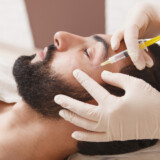
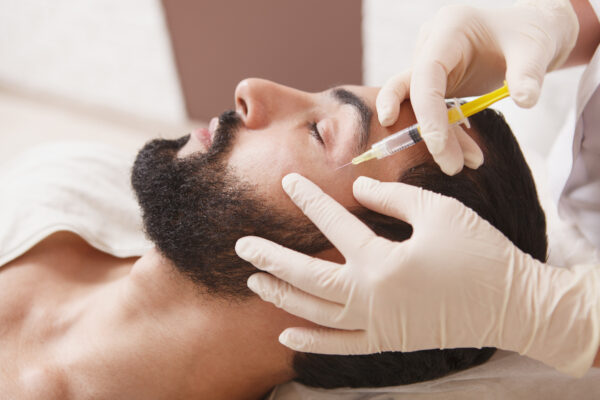
The safety of Botox injections has been recognized by numerous worldwide health organizations, including the FDA.
When it concerns conversations related to Botox procedures, there are often misunderstandings that can complicate the conversation. It’s about time we addressed this widely discussed aesthetic procedure. We want to dispel five common misconceptions about Botox and provide you with factual, scientific information that might change your mind.
Myth 1: Botox causes harm
One of the most widespread misconceptions about Botox is that it is not secure. Let’s dispel this right away: Botox is not intrinsically harmful.
Dispelling the Myth of Botox’s Danger
Although botulinum toxin, the primary component of Botox, may seem dangerous, it is utilized in very small amounts and is strictly regulated to avoid any risks. When used correctly, injections of this substance can temporarily relieve fine lines and wrinkles for a more youthful appearance.
Knowing How Secure Botox Injections Are
Many international health organizations, including the FDA, have acknowledged the security of Botox injections. These injections are given under regulated circumstances by medical experts.
The FDA and Botox: What You Should Know
The FDA has approved Botox for both medical and aesthetic purposes. This information can help dispel the misconception that Botox is a high-risk procedure.
Myth 2: Getting Botox will “freeze your face”
Some people may be reluctant to use Botox because of this specific myth about the aesthetic procedure. Botox doesn’t cause your face to “freeze.”
Botox Facts: Dispelling the Face-Freezing Myth
The way that Botox reduces muscular activation is by obstructing nerve signals in the injected muscles. It doesn’t paralyze your face, but it does restrict some muscle movements that cause wrinkles and fine lines to appear.
The Truth About Facial Movements and Botox
With the help of a proficient Botox injector, you can preserve your natural appearance and carry on expressing your feelings. That means your face won’t “freeze.”
Do injections of Botox affect the expression of facial emotion?
Undoubtedly, well-administered Botox injections can minimize wrinkles without compromising your capacity to express your facial expression.
Myth 3: Fillers and Botox are similar
When it comes to aesthetic procedures, Botox and dermal fillers may appear to be similar, but they actually have distinct purposes.
How Other Aesthetic Fillers Differ from Botox
Botox is administered to reduce the appearance of fine lines and wrinkles caused by facial movement. Dermal fillers, nevertheless, are used to enhance volume and smooth out wrinkles that remain on the face even when it is at rest.
Dispelling Myths Regarding Botox and Fillers
Although injections are used in both procedures, Botox is not a filler. It prevents the wrinkling-causing actions of your muscles.
The Science of Dermal Fillers and Botox
Every one of these choices has particular advantages and is employed for distinguished purposes. Fillers give volume to areas like the lips and cheeks, while Botox assists with fine lines and wrinkles.
Myth 4: You have to keep having Botox once you’ve gotten it
The idea is that if you receive Botox, you have to keep doing it. We must dispel this misconception about Botox immediately.
Dispelling the Myth of the “Addictive” About Botox
The use of Botox is not physically addictive. Although the effects of Botox are transient, usually wearing off in three to six months, there’s no scientific reason you should have to keep getting shots unless you would like the outcome to stay.
The Botox Injections’ Optional Continuity
Your wrinkles are not going to get worse if you decide to stop getting Botox injections; instead, they will gradually revert to their pre-Botox appearance.
The Transient Nature of Botox
Botox only temporarily lessens the appearance of wrinkles and fine lines; it is not a permanent solution. After you stop taking Botox, your skin will go back to normal.
Myth 5: Botox is just used aesthetically
Botox has other uses for aesthetic reasons, but most people associate it with those. Additionally, Botox is utilized to treat a variety of medical conditions.
Disproving Botox’s Use for Aesthetic Purposes Only
Although Botox is commonly used for its aesthetic effects, it also has many medical applications, including treating specific migraines and muscular spasms.
Discovering the Medical Uses of Botox
Chronic migraines, profuse perspiration, an overactive bladder, and even crossed eyes can all be treated with Botox. This demonstrates unequivocally that Botox is more than simply an aesthetic procedure.
The Versatile Uses of Botox Beyond Aesthetics
Whether you believe in Botox or not, it’s critical to dispel prevalent misconceptions about the condition and provide the truth. It’s imperative to delve further and comprehend the true nature of Botox before making any snap judgments or conclusions. Always remember that it’s preferable to arrange a consultation with a qualified medical expert for individualized guidance.
Botox injections can only be given accurately by licensed medical experts. They know how to provide it in the most effective way possible. So, excessive Botox won’t be necessary. Dentox is a training program designed to teach medical experts and aestheticians how to correctly inject Botox.
Experts who want to become licensed injectors of Botox and fillers can now do so. Live patient classes are available at https://dentox.com/live-courses/, while online Botox training classes are accessible at https://dentox.com/all-courses/botox-training/. Acquiring new skills that assist your patients is a great way to progress in Botox and provide the finest experience for your customers.
Avoid Bruising after Botox or Filler Procedures with These 5 Easy Steps
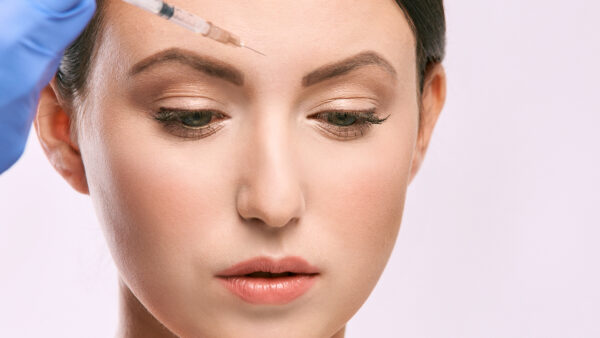
Ice or cold packs on the injection sites at home can reduce bruising and pain.
If you want to look your best, all you want to do is minimize the appearance of wrinkles, sagging skin, and fine lines. Fillers and Botox, which are injectable cosmetic procedures, are the solutions to this issue.
However, bruising is a possible side effect of any injection. Here are five tips to prevent bruising if you’re considering Botox or filler treatments.
1. Do not use any blood-thinning vitamins or drugs before the procedure
Platelets are blood cells that assist in preventing bleeding and bruising. Some medications and supplements can slow them down. The risk of bruising after an injection increases if the platelets cannot reach the damaged capillaries or blood vessels.
Do not use aspirin, NSAIDs (such as Advil, Motrin, naproxen, or ibuprofen), or any substance that acts as a small blood thinner for at least two weeks before the procedure. There will be less chance of bruises if you do this.
It is recommended to refrain from taking some supplements before treatment, such as vitamin E, St. John’s Wort, garlic, turmeric, chia seeds, ginkgo biloba, flaxseed oil, and other oils rich in omega-3 fatty acids.
Consult a medical professional before discontinuing any regular medication. To guarantee the finest outcomes and your health, qualified medical professionals will talk to you about any supplements or medications you take before treatment.
Dentox is an educational program that teaches medical professionals how to inject dermal fillers and Botox in a way that minimizes discomfort and downtime for their patients. For additional information regarding Dentox programs, contact Dr. Howard Katz.
Take a look at https://dentox.com/all-courses/dermal-fillers/ and https://dentox.com/all-courses/botox-training/ to choose a reputable training program. These will keep you abreast of enhancements in your industry and provide you with the skills you need to succeed. Visit https://dentox.com/live-courses/ to participate in live classes with real patients.
2. Pre- and post-treatment, stop drinking alcohol
Alcohol acts like a vasodilator, meaning it widens and relaxes blood vessels. Having a small amount of alcohol, such as a shot of strong liquor or even just a glass of wine, can have this impact and make you more prone to bruising after Botox or filler procedures.
Thankfully, alcohol’s vasodilating effects are temporary. If you want to keep your injection sites from bruising, don’t drink alcohol for at least 24 hours before and after your therapy.
3. Use arnica in pre- and post-treatment
The perennial flowering plant Arnica montana, sometimes known as just Arnica, grows in sunny, higher-altitude areas. In addition to its many other uses, it has a long history of use in the treatment of bruising and swelling.
If you want to avoid bruising during your treatment, try taking Arnica sublingual tablets or pills four to five days before and after. Unsure where to look for it? You can find arnica as an over-the-counter supplement in numerous places, including online marketplaces, homeopathic pharmacies, and drugstores.
4. Apply ice or cold packs to the affected regions during and after treatment
By constricting blood vessels, cold packs and ice reduce blood flow to injection sites. As a result, injection-related bruises are less likely to occur. On top of it all, using packs before treatment numbs the area and could make the needles less painful.
Before treatment, medical professionals may prescribe ice packs. You can use ice or cold packs on the injection sites when you get home to lessen the chance of discomfort caused by bruising after injections.
5. Do not engage in strenuous workouts for two days after the procedure
Workouts are well-known to improve cardiovascular health and are great for your health. However, the increased heart rate and blood circulation aren’t good for bruising.
While it’s safe to go back to your routine right away, it’s best to avoid strenuous exercise for a few days. To speed up the healing process for the damaged blood vessels and capillaries, it is recommended to avoid strenuous workouts for at least two days after Botox or filler treatment. This will help to minimize blood flow.
How Long Is the Duration of Botox’s Effects? Knowing How Long Botox Lasts
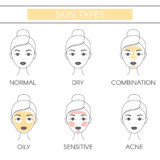
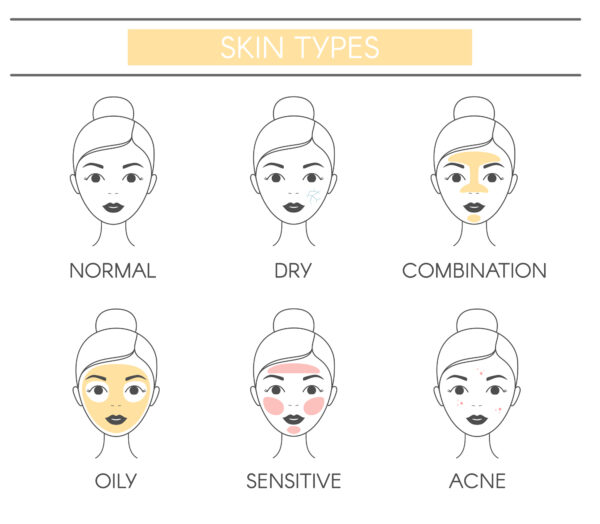
The metabolic rate, skin type, treated area, and frequency of treatments all affect how long Botox effects last.
One of the most frequently asked questions when considering Botox is the duration of its effects. The effectiveness of this neurotoxin in reducing wrinkles and rejuvenating appearance is already widely recognized. Understanding the duration of these results is crucial for individuals considering the treatment.
The effects of Botox on your appearance vary from person to person. Several factors influence the duration of your rejuvenated appearance. Various factors, such as metabolic rate, skin type, the area treated, and the frequency of treatments, contribute to the duration of your newfound transformation.
To provide you with a thorough analysis, we will delve deeply into the longevity of Botox in this extensive investigation.
Additionally, it is crucial to seek guidance from a certified healthcare professional before pursuing any medical aesthetic procedure to ensure its suitability for your specific needs. They will also inform you of any potential risks and side effects.
1. Resolving Concerns for Permanent Botox Effects
Because Botox’s effects are just temporary, you don’t have to worry about the results persisting. In other words, patients are free to switch up their treatment plans whenever they are dissatisfied with the outcomes.
The effects of Botox typically disappear over three to four months, giving you plenty of opportunity to make any adjustments that are needed. Patients can simply wait for the span to pass and then speak with their healthcare professional about making alterations or expressing concerns if they aren’t satisfied with the outcomes or haven’t achieved the desired look.
The fact that Botox only lasts for a short period also helps in accommodating a person’s evolving preferences and enhancing their appearance as they age. For instance, it’s perfectly fine if someone initially desires a major transformation but then comes to the realization that they desire a more subtle one. Then they can simply modify their botox treatment plan as needed.
Another advantage of getting Botox or another temporary treatment rather than a permanent one is that you can observe the effect of the enhancement on your face before you commit to it. Without going to other choices, which are more invasive methods, it reveals the kind of appearance it produces and whether you’re satisfied with it.
2. What Is the Duration of the Botox Effect? Factors That Affect How Long Botox Lasts
2.1. Botox Longevity and Metabolism Rate
The duration of the toxin’s effects is dependent on our body’s digestion rate. Because the breakdown process is quicker for those with faster metabolisms, you might need a couple of additional treatments.
2.2. Multiple Botox Treatments and Their Impact on Lifespan
Multiple sessions may be necessary to achieve the desired result when a single treatment is insufficient. Over time, your muscles will adapt to less activity, which means that they will become more relaxed. You won’t have to touch up on them as frequently. While it’s true that some people may have these repercussions, it’s still common for people to have various outcomes.
2.3. Power of the muscles
Facial muscles are just as impacted by factors such as metabolism. The strength of these factors determines how quickly Botox will break down, with stronger Botox resulting in shorter-lasting effects and weaker ones causing the effects to last for longer.
2.4 Dosage
Because higher doses of Botox may prolong the duration of the effects provided by Botox compared to lower ones, the amount injected can speak wonders about how long you’ll be able to maintain a certain appearance.
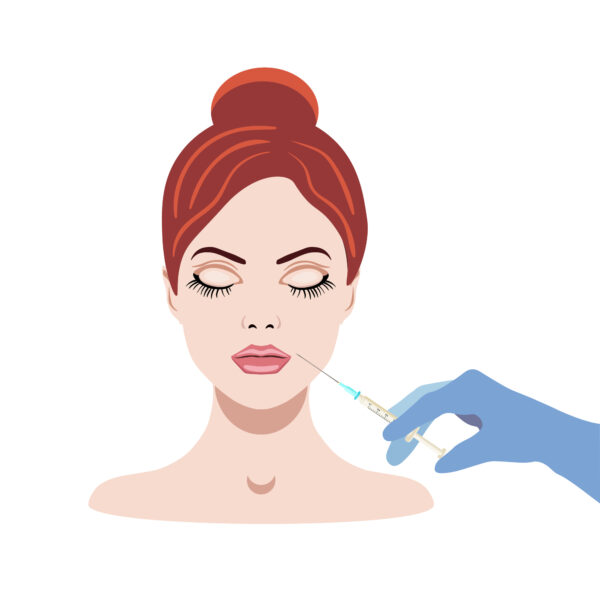
The competence and accuracy of the neurotoxin’s injector determine the effectiveness and duration of its effects.
2.5. Technique of injection
The effectiveness and duration of the effects are dependent on the skill and precision of the person administering the neurotoxin. Improper administration increases the likelihood that the toxin will not reach the target muscle as intended.
2.6. Lifestyle factors
Smoking, heavy alcohol consumption, and even sun exposure are some habits that can shorten the duration and diminish the efficacy of Botox.
2.7. Personal response
Botox can have varying effects on different people’s bodies. Because of this, some people may experience a longer-lasting effect than others. For instance, the toxin’s metabolism may be faster in some people than in others.
It’s best to talk to a medical professional who has experience administering Botox; they’ll be able to advise you on the optimal dosage, treatment frequency, and duration of treatment based on your unique needs. Beyond that, they must be able to figure out the best procedure for achieving your goals.
To ensure that medical professionals are using the best possible methods when injecting Botox, Dentox has developed a comprehensive education program. For medical professionals to be successful in this niche area of aesthetic medicine, our program is tailor-made to meet their needs.
For more information and to become more proficient, you can enroll in our online course at https://dentox.com/all-courses/botox-training/. Please visit https://dentox.com/live-courses/ to learn more about our live patient training sessions and to secure your spot if you are interested in this unparalleled opportunity.
3. Monitoring the Botox Outcomes
3.1. Estimated Time to See Botox Effects
While results may vary from patient to patient, you should expect to see the effects of Botox injections within one to three days following treatment, with a peak at about two weeks.
3.2. Assessment of Botox’s effectiveness
The most effective method would involve both self-evaluation and follow-up medical consultations. Additionally, it is important to make sure that touch-ups or adjustments are applied as needed.
3.3. Appointments for Touch-Ups and Evaluations: Ideal Timing
After two weeks of treatment, most medical professionals recommend patients return for a follow-up appointment to assess the results and determine if any further touch-ups are necessary.
Final Remarks
The majority of patients report that the effects of Botox remain for three to four months following treatment. However, this range isn’t definitive because it might take longer for some people or they might not feel the effects for longer than others.
Dermal Fillers: How They Work
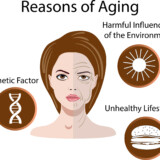
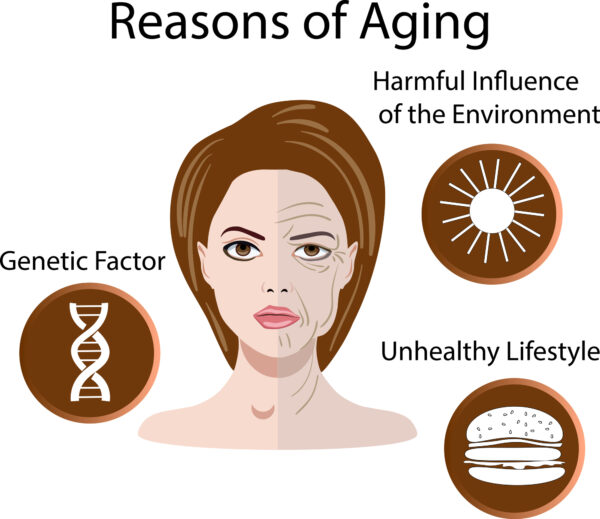
Sunlight exposure, a decrease in collagen production, genetics, lifestyle choices, and environmental conditions all play a role in skin aging.
Dermal fillers offer a great option for achieving a more youthful complexion. Injectors with the right level of expertise may cater treatments to each patient’s specific wants and goals while also taking their skin’s unique characteristics into consideration.
If you’re interested in regaining a youthful look, it’s worth taking a moment to understand how dermal fillers operate and the benefits they can offer.
Understanding the Aging Process of Your Skin
Regardless of how diligent you are with sunscreen and skin products, it’s impossible to completely prevent your skin from undergoing changes as you get older. Sunlight, a decline in collagen production, genetics, lifestyle choices, and environmental conditions are all contributors to skin aging.
Here are four common changes to your skin that typically occur as you get older:
- Lines of dynamic expression: wrinkles and fine lines that form on the face as a consequence of frowning and smiling over and over again.
- Gravitational folds: A combination of the natural effects of gravity’s pull on the skin and the loss of skin elasticity that comes with getting older causes lines and wrinkles.
- Persistent elastic wrinkles: The appearance of wrinkles and creases caused by lifestyle factors including smoking and damage from sun exposure
- Atrophic crinkling rhytids: decreasing collagen production and loss of skin elasticity lead to the formation of wrinkles and lines.
As you notice, there are numerous ways that your skin changes as you age. Dermal fillers help you rewind the hands of time safely and effectively.
Dermal Fillers and the Procedure of Action
The gel-like substances used to make dermal fillers are injected just beneath the skin’s surface. They work by restoring lost volume and improving skin tone to fill out thin areas, which in turn reduces the appearance of wrinkles and fine lines.
The success of these fillers can be attributed to the use of hyaluronic acid and collagen, which are key ingredients. These two chemicals are present in your body’s natural production. Hyaluronic acid keeps the skin and tissues moist and aids with lubrication. Your body makes collagen, a protein that naturally helps cells rebuild themselves. Additionally, it has a significant impact on maintaining the skin’s elasticity and the process of cell renewal.
There are not many concerns involved in the use of dermal fillers because they are created from natural substances that are already present in your body. The finest aspect? Depending on your particular demands, dermal fillers can be used to create a variety of outcomes.
What You Can Get Out of Dermal Fillers
Various dermal fillers possess distinct characteristics that influence their duration of effectiveness and the level of softness they provide. If you’re interested in exploring options for addressing your anti-aging concerns, it’s advisable to seek guidance from a healthcare practitioner who can help you identify the most suitable filler for your specific goals.
Dermal fillers are a great solution for many skin-aging issues, including:
- Loss of skin elasticity
- Hollow cheeks
- Volume insufficiencies within the temple
- Lines, deeper wrinkles, and creases
- issues with thinning lips and lip lines
- Parentheses lines and nasolabial folds
The results of dermal fillers will be immediately apparent. However, it is possible that certain individuals may require multiple procedures to achieve the desired outcomes, depending on their present skin condition.
A filler provider can help with common skin issues caused by aging by providing some of the most reliable and effective fillers. Additional aesthetic procedures to improve your results should be seriously considered.
If you’re looking to enhance your look, dermal fillers can make a significant difference. These injectable procedures are designed to enhance your natural features, giving you a refreshed and rejuvenated look. Get involved in a discussion with an authorized practitioner to find out how incorporating dermal fillers into your skincare routine may improve your overall radiance and give you the ultimate glow-up.
Are you interested in expanding your knowledge of how dermal fillers function and the benefits they offer? If you’re looking to enhance your expertise in utilizing dermal fillers, consider enrolling in a credible training program at https://dentox.com/all-courses/dermal-fillers/. This will help you get informed about the latest advancements in your field and acquire the necessary skills for success. You can participate in the training programs in person, working directly with real patients, at https://dentox.com/live-courses/. Acquire the necessary expertise to enhance an individual’s appearance, well-being, and eyesight, thereby enhancing their general level of life.
Thinking about Getting Botox Injections at Home? Make Sure You Read This Before Doing the Procedure


Medical aesthetic procedures require the expertise of a licensed medical professional and must be administered in a clean and sterile office setting.
The realization of how much one can accomplish without leaving the house has been growing among individuals ever since the pandemic. There was a dramatic shift in the beauty industry at the time, with at-home treatments becoming the focal point of nearly every product line. Salons and spas that provide manicure and pedicure treatments have started offering home-call services. Similarly, hairstylists also began to accept their clients’ requests to visit homes for haircuts and recoloring. Now, in terms of medical cosmetics, what kind of treatment can you do at home?
An increasing number of brands are now offering at-home aesthetic services, such as Botox injections. “Botox parties” have been around for a while, but for those who aren’t familiar, they’re just gatherings where people get injections of Botox in a social setting with food, drink, and friends. This includes a broad range of medical aesthetic procedures that can be done at home, such as chemical peels, microneedling, Botox, fillers, and platelet-rich plasma (PRP) hair rejuvenation.
Even though it’s a convenient and enticing idea, I have to wonder: Is it safe to get these treatments in a non-sterile place like someone’s bedroom or living room? After all, a lot of them entail needles piercing the skin. Here, experts in the field describe in-depth medical aesthetic procedures that you can carry out in the comfort of your own home.
In-Home Medical Aesthetic Procedures: What Are They?
Home medical aesthetic procedures are exactly what they sound like. They are treatments that concentrate on improving one’s appearance. Injections of Botox, chemical peels, microneedling with platelet-rich plasma (PRP), SkinPen treatments, and dermal filler injections are among the treatments provided by various medical aesthetic services. What makes them different is that they are conducted in the clients’ homes instead of medical spas or clinics.
Doing Medical Aesthetics Procedures at Home: Is It Safe?
You should not assume that you are only scheduling appointments with competent medical professionals unless your doctor is someone you have researched extensively and who works exclusively in an office. Before having any kind of medical aesthetic procedure done, you must consult with a qualified medical professional or board-certified aesthetician.
When it comes to medical aesthetic treatments performed at home, there are quite a few concerns. One is that there is no guarantee that the treatment will work. You have no assurance that a medical professional who is not board-certified has acquired sufficient education, much less the appropriate education, to deliver the outcomes you desire. If your skin stays unharmed, you are lucky. But getting an infection or skin problem is the worst-case scenario.
Terrible, unusual, and deep fungal infections are common at injection sites for tainted fillers. Also, biofilms can lead to deformity. It is foolish to prioritize ease over safety when injecting anything subcutaneously.
Because of the very nature of the procedures, they are considered medicinal. These treatments must be carried out in a sanitary and sterile office environment, as they require the expertise of a licensed medical professional.
The Best Place to Get Medical Aesthetic Treatments
Prevent potentially nightmare side effects by seeing a board-certified doctor in a sterile clinical environment at all times. Using local search terms to identify a board-certified medical expert.
Ask friends and family who have used the services of a board-certified doctor for advice and feedback. To get a better idea of how the procedure could look on your skin, you can also ask a licensed medical professional for before and after pictures of patients with your skin type and specific concerns.
For maximum safety and efficacy, it’s best to get injections from a licensed expert. To put your health and the efficacy of your treatment first, we must do this. Furthermore, it is usual practice for an experienced Botox injector to create a customized treatment program to assist you in sustaining the outcomes you desire.
Furthermore, to lessen the likelihood of Botox issues, it is recommended to use the services of an experienced injector. If you want results that look natural and are yet secure, it may be worth it to invest in higher-quality choices.
Dentox provides training to medical professionals on how to inject Botox in a manner that is both safe and effective. You may find more information about our live courses and virtual courses at https://dentox.com/live-courses and https://dentox.com/all-courses/botox-training, respectively.
Does a Botox Brow Lift Work? Details on the Price, Potential Side Effects, and Outcomes for the Year 2024
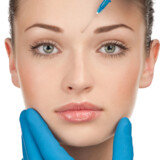
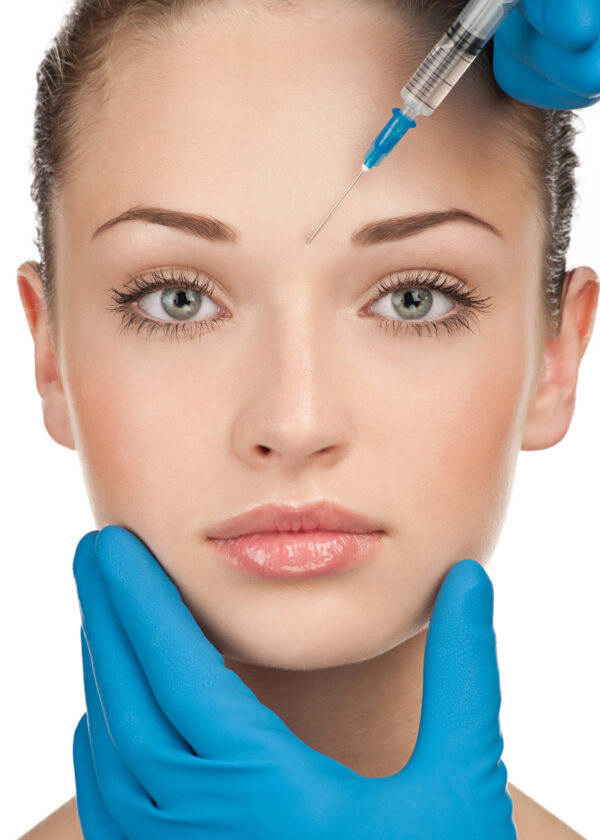
The Botox brow lift, also known as Browtox, can give you the appearance of wide eyes and a refreshed look, even if you didn’t get the suggested eight hours of sleep in a long time.
While neurotoxins like Botox have a stellar reputation for reducing the appearance of fine lines and wrinkles on the forehead, you might not be aware that they have equally fantastic functions when injected into the forehead area. You can have a wide-eyed and refreshed appearance with the Botox brow lift, also known as Browtox, even if you haven’t gotten the suggested eight hours of sleep in a long time.
When you desire a little lift in the brow area but don’t want to undergo the pain and recovery time of plastic surgery, a Botox brow lift could be the perfect solution. However, it is temporary. The subsequent content provides an overview of Botox brow lifts, including evaluations of the procedure, its advantages and disadvantages, and its duration of effect.
Are brow lifts possible with Botox?
Injecting Botox into the fibers of the orbicularis oculi, the muscle that surrounds the eye and is positioned at the tail of the brow, is a subtle but aesthetically pleasing way to elevate the outer brow.
To relax the muscles that draw the eyebrows downward, a neurotoxin such as Botox can be injected into specific areas at the tail of the brow. The outcome is a subtle lift because the muscles responsible for lifting the brows can perform more efficiently. By using this method, you can open your eyes wider and achieve a more rejuvenated look.
A Botox eyebrow lift—what are the drawbacks?
Botox brow lifts can be expensive and don’t last forever, which are two of the main drawbacks. Because the effects wear off after a few months, you’ll have to keep getting treatments to keep them going, which might add up quickly. It’s a fantastic choice for anyone looking for a mild lift.
Potential adverse effects include injection site redness, slight discomfort, or temporary bruising. But in terms of the outcomes, any issues are strongly related to your injector, the injection technique, and the correct dosage.
Patients may have a few concerns about the injection site since a botched procedure could cause their eyebrows to droop instead of lift (though this is highly rare). The injection could inadvertently strike the lower fibers of the forehead muscle and cause the brow to drop if it’s injected too high above the tail of the brow. A wrong placement in the glabellar complex (the area where the “11s” lines appear) can potentially induce brow heaviness or depression and, in extremely rare instances, a drooping of the lids (ptosis). When you inject too far above the procerus muscle, which is located between your eyebrows, it might also cause the middle eyebrow to droop, which can make you look angry. As the effects begin to wear off, they typically disappear.
Although this highlights the significance of consulting a trusted injector about your desired outcomes, before undergoing any procedures, it is recommended that you schedule a consultation to meet with your injector and conduct research about the practice. See before and after photos, direct message (DM) previous patients to inquire about their experience, and read reviews.

It is advised that you schedule a consultation with your injector and get to know more about the procedure before having a Botox brow lift.
Is Botox more effective than surgery for a brow lift?
Depending on your desired outcome, Botox may be “better” than a surgical brow lift. People whose eyebrows droop significantly may benefit more from a brow lift procedure, while those whose droop is slight to moderate or who choose a less invasive choice may find that Botox injections work better.
It also depends on how high you want your brows to be. Botox can raise the brow by 1 to 3 millimeters if injected in the right places. Surgical brow lifts, on the other hand, can sometimes raise the brows more than 5 mm.
When compared to Botox, whose effects wear off after a few months, surgical brow lifts provide benefits that last for years. Botox, on the other hand, is as painless as a few needle pokes, whereas a surgical brow lift involves incisions, swelling, and bruises that last for a week or two. The extent of correction needed, your budget, your goals, and your tolerance for downtime will determine the choice.
What is the cost of a Botox brow lift?
Botox brow lifts often cost between $300 and $1,000 per treatment. The injector’s credentials and the location’s competitive pricing will determine the final price. In areas like Manhattan, a full lift—which involves injecting the glabellar muscles and the tail of the brow—could cost anywhere from $350 to more than $1,000. Prices might vary from $100 to $350 for only the tail. For an accurate assessment and personalized cost estimate, it’s wise to seek the advice of a competent practitioner.
What to do after a Botox brow lift:
Immediately following the injection of Botox or other neurotoxins, there may be a slight raised bump that subsides with ice and pressure in the office. Icing at home to reduce the risk of bruising (use a reusable ice pack or an ice roller) and restricting physical activity for a few hours after the injection. Also, avoid facial compression, such as laying your face down for a massage, for a few days after the treatment.
Botox treatments can improve the appearance of fine lines and wrinkles, as well as the skin’s elasticity and radiance, which can make you look years younger. It helps reduce the appearance of wrinkles and other age-related issues. The correct care, both before and after the treatment, can be yours with the assistance of a reliable professional.
Dentox educates medical professionals on how to inject Botox safely and efficiently. Whether you prefer to attend a class in one of our many conveniently located centers or take advantage of our convenient online learning alternatives, you have the freedom to choose how and when you study. Visit https://dentox.com/live-courses/ to see our in-person classes, and go to https://dentox.com/all-courses/botox-training to see our online classes.
Unveiling the Hidden Benefits of Neck Botox Beyond Just Reducing Wrinkles


Neck Botox has both cosmetic and therapeutic benefits, including the relief of chronic neck pain.
“Neck Botox” is a term you might be familiar with. If that’s not the case, then we can explore this trendy cosmetic treatment.
Injecting botulinum toxin into the muscles of the neck is known as “Neck Botox,” and it is a non-invasive procedure. A more youthful look with fewer wrinkles is the aim.
On the other hand, its benefits are far-reaching beyond just reducing wrinkles. It is the topic that this article will delve into. Prepare to be amazed by its hidden benefits.
Keep reading!
Hydrated Skin
Dryness, dullness, and wrinkles are the results of skin losing its suppleness and hydration as we get older. By increasing the skin’s collagen production, neck Botox can be an effective weapon against this.
Our skin’s structure and strength come from a protein called collagen. Skin hydration and suppleness can be enhanced with neck Botox by boosting collagen production. The result is a complexion that looks younger and healthier.
Tightening the Neck
Sagging skin around the neck is a natural consequence of age-related muscular atrophy and weakening. Botox for the neck relaxes these muscles, making the skin look tighter and smoother.
It serves double duty by tightening your jawline and neck muscles overall. A sharper and more defined face shape can be achieved with this.
Lessening Neck Pain
Neck Botox has both aesthetic and therapeutic benefits, including the alleviation of persistent neck pain. Muscle tension and pain can be alleviated with the injections by inhibiting the nerve signals that cause muscle contractions.
For people struggling with conditions like chronic migraines or cervical dystonia, this is a great choice.
Relieving Migraine
Concerning migraines, neck Botox can effectively lessen the frequency and severity of migraine headaches. It works because it can relax the forehead and neck muscles that contribute to migraine pain.
Thus, neck Botox not only makes you look more appealing, but it can also help with those debilitating headaches. It performs well for both of them.
A Treatment for Hyperhidrosis or Excessive Sweating
You might be surprised to hear that neck Botox can also reduce excessive sweating. By inhibiting particular nerve signals that stimulate sweat glands, the injections effectively decrease sweat production.
Because of this, it is a great choice for those who struggle with hyperhidrosis and want a permanent solution to their problem of excessive sweating. In addition, it can assist in minimizing perspiration-induced body odor.
You can anticipate additional advantages with any cosmetic procedure, be it a stomach tuck, neck Botox, or anything else. You can hope for a safe and effective treatment as long as you choose a qualified cosmetic specialist.
Unveil the Hidden Advantages of Neck Botox
Neck Botox does more than merely smooth out wrinkles. Its revolutionary potential includes enhancing people’s overall health and happiness.
This cosmetic procedure has grown in popularity among individuals seeking a solution to their cosmetic and functional beauty problems, as it effectively moisturizes the skin while also alleviating headaches and neck stiffness.
So why not treat yourself to the luxurious art of neck Botox? If you want to know the hidden benefits, you should talk to an expert. Trust me, you won’t be let down!
The way medical professionals learn to administer Botox injections is revolutionizing, thanks to Dentox. Because Dentox makes this information more accessible, patients have more confidence in medical professional abilities to administer these injections correctly.
Come to one of our enlightening seminars in any of many U.S. cities to witness personally how knowledge can transform your life. Alternately, you can enroll in our dynamic sessions and attend them whenever it’s convenient for you, either in real-time through our interactive online platform or later on when you need them, making it possible to tailor your education to your schedule. Taking action to improve your health and progress is entirely on you.
To learn more about our live and virtual courses, check out https://dentox.com/live-courses and https://dentox.com/all-courses/botox-training, respectively. Thank you. To help people find the best Dentox course for their needs, these platforms discuss all of the available options in comprehensive detail.





